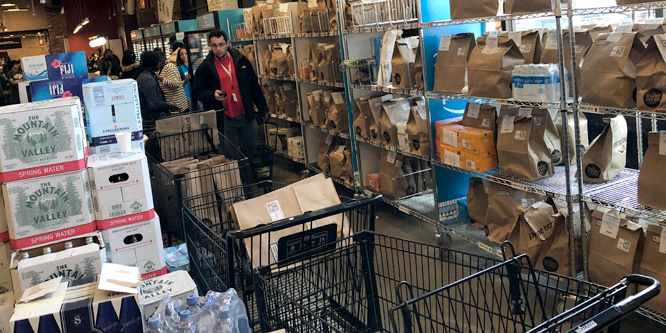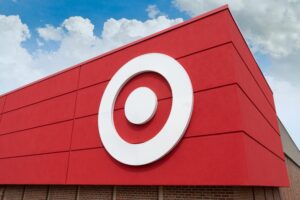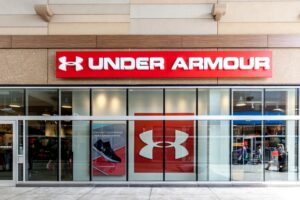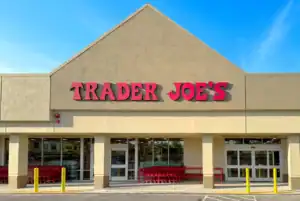
Photo: RetailWire
June 3, 2020
Is the future of retailing going dark?
As we move into a new phase of the coronavirus crisis, it’s clear that delivery, click and collect/BOPIS and curbside pickup are here to stay. These options were slowly picking up speed already, but recent events have given them an unexpected boost. First-time users who wanted to avoid in-store shopping are finding these options convenient and are likely to keep using them.
Retailers need to get creative to give these customers the experiences and levels of service they expect. As people return to work, requests for evening and weekend pickup and delivery are going to increase. How can retailers meet customer demand as it moves from in-store shopping to these relatively new channels?
Perhaps, it is time for retailers to consider moving away from a centralized fulfillment model that often comes with high distribution costs and longer delivery times. Right now, this isn’t ideal for customers accustomed to receiving their orders within hours, not days — particularly when those orders include perishable foods. A centralized model is also more difficult to scale when peaks occur.
Retailers need to study the benefits of decentralized fulfillment, which trades efficiency for accessibility and scalability. Rather than picking for online orders from open stores, which worked as a short-term but expensive solution, savvy retailers will add more dark stores to serve as local fulfillment centers. Dark stores are a cost-effective way to shorten delivery times and give retailers the ability to make more strategic inventory choices by location.
A decentralized model requires a granular level of inventory data to ensure that each dark store is appropriately stocked with an assortment that has local appeal. Shoppers placing online orders expect that they will be presented with accurate, local availability information and planners need to be able to adequately meet demand with minimal stock-outs.
Decentralized fulfillment can only be successful with robust investment in technology. Automated, data-driven forecasts provide the insights to monitor local trends, weather and events, as well as to optimize floorplans for easier order picking. Such forecasts ensure that fresh products are delivered to dark stores at proper intervals to meet online demand (which may differ from in-store demand patterns) while minimizing waste. An integrated workforce optimization system can then automatically schedule appropriate staff to handle stocking, picking and delivering inventory based on demand. If needed, robotic picking, which has become more accurate and affordable, can be incorporated to improve efficiency further.
Discussion Questions
DISCUSSION QUESTIONS: Is a dark store strategy the best way for retailers, particularly those selling high-turn products, to stay competitive in the post-pandemic era? If not, what other ways can retailers meet the demands of their increasingly digital shoppers?
Poll
BrainTrust
Paula Rosenblum
Co-founder, RSR Research
Kenneth Leung
Retail and Customer Experience Expert
Peter Charness
Retail Strategy - UST Global
Recent Discussions







Any mall retailer can take a very surgical look at their store performances and evaluate this proposal. Sounds like it makes a lot of sense when applied on a very localized basis. The other main argument I hear in this article is a powerful reason for Amazon to buy J.C. Penney, apply the dark store thinking, reinvent the stores that will stay open, and re-energize the reinvention of the mall.
No need to over-answer this one — an emphatic “yes.”
As online shopping expands, dark stores are an option. But retailers need to take a holistic view before committing to any single solution. Other concerns, e.g., inventory management and automation, need to be sorted out first. Third-party shopping services like Instacart will continue to shop open stores, which will impact consumer shopping experiences. Online and offline will continue to meld as shoppers determine what works best for them. Addressing any of these will take time, and consumers will continue to morph and change habits. Be aware and ready to pivot.
Not a simple concept because of the inventory management aspect: right stuff in the right place at the right time? The more inventory locations a company has, the more susceptible it is to bloating inventories. Most companies have not mastered this art, yet.
So in a lot of cases, dark stores are more profitable than if the store operated as a regular store unit. So yes, I think this trend will continue as the old concept of shopping has been altered due to the pandemic.
It’s a math problem. “Dark stores” vs. “distribution center” implies much higher rents. If the additional revenue offsets the additional cost, then it’s fine. I could also see using a second floor of a “light store” (vs. dark) for fulfillment.
I think the bottom line is retailers need to become more agile and flexible. Maybe in “normal times” the store is traditional, and in periods when delivery and pick-up are more important, go dark.
One way or another, technology is going to be required to make this a profitable endeavor.
When consumers order a product online, they expect prompt delivery. For instance, more than half of U.S. consumers under the age of 25 say same-day shipping is their top purchase driver.
Speed creates the biggest advantage in grocery, as freshness is paramount. Now that grocers compete against retail giants promising same-day and two-hour delivery, micro-fulfillment makes strategic sense.
Delivery from dark, urban stores can prove faster than fulfillment from suburban warehouses. That’s why, as mid-market chains close, more grocery retailers will move into abandoned urban locations to accelerate e-grocery fulfillment.
I have said before that stores of the future will be smaller and will be for display only, giving the customers a chance to see and try the product before purchase, but most, if not all, purchases will not take place at the store level. We saw the early stages of this before the COVID-19 pandemic. One benefit from the shutdown was allowing stores to take this concept to the next level. I still believe that the future of retail will be fine; however, it will involve smaller stores, much more technology, and the customer accepting what I stated: seeing, touching, and trying the product but not buying the item at the store. This concept will better help control inventory, which will reduce costs. Moreover, with smaller stores, we will need fewer employees, which is another savings. Most importantly, as technology continues to improve, purchases will arrive at the consumer’s home just as quickly as if they brought the item home from the store themselves.
It’s pretty hard to go dark, when you are an independent store like mine. We do some BOPIS now with the new handheld unit for outside transactions including EBT. There are lost sales for sure and, in my case, a lot of lost sales as my deli creates a lot of sales through sampling, and our meat section is also a showcase for great deals. Food shopping is not a one-size-fits-all and, for me, I’ll take the old-fashioned way — plus the BOPIS if customers choose that option.
The concept of local fulfilment is spot on and we will see a lot more of this post-pandemic as retailers look to use stores to meet online demand. In categories like grocery, this will likely mean devoting some space to automated micro-fulfilment centers.
However, the dark-store narrative is overblown. It is true that during the crisis some stores closed and went to dark mode, but that’s only because those locations suffered a decline in footfall while online demand rocketed. I do not believe a majority will remain dark once things normalize. Why? Because most of them – like Whole Foods in Bryant Park – are in ridiculously expensive locations and are configured to serve customers. If you wanted a dark store to serve NYC, you would not locate it there and you wouldn’t have that space configuration. Online is unprofitable enough without adding very high-cost fulfillment locations into the mix.
What we will see is a hybrid model. Stores that both serve customers and fulfill for online. That’s the best way to maximize profitability and deal with shifts in demand.
Yes, fulfilling a large volume of online orders in a store with tons of customers can be a challenge not only in terms of higher costs but also insofar as it may impact the experience of your everyday customers. More and more retailers will test and roll out a dark strategy in select areas, likely more urban areas. Business processes will continue to have to be agile as customer shopping behavior changes frequently during and after this crisis.
Dark stores are a powerful tool for retailers. Several advantages arise from dark stores – including local proximity to customers, decentralized inventory that can be more easily reassigned, and implicitly enforced true omnichannel – where e-commerce and physical stores operate on the same inventory. For retailers that can master the inventory and dark stores, all the omnichannel capabilities will open up quickly. Locations become more important as they will cater to a region of both physical and e-commerce needs, but strong tech tools will give retailers the advantage, defraying costly warehouses but still executing on rapid fulfillment. Most stores already operate in some form in micro fulfillment mode, and have excess space – there are so many cost saving and growth opportunities with implementing a dark store strategy. This will also positively impact retailers in the process of reopening their stores as a transition and eventually permanent step.
Impact on fast-turn products can go either way, depending on demand – but efficient demand forecasting (maybe AI powered) can make it work. It will also de-risk excess inventory going to the wrong stores, reduce customer delays, and come closer to a true just-in-time model.
COVID-19 is an accelerant of change. Approaches to grocery-type products will accelerate toward omnichannel dominance. Last year online grocery was predicted to have large growth in markets like the U.S. – this will only grow due to COVID-19. U.K. grocers have doubled capacity of delivery but still cannot meet demand – this is not going away. People who would never have considered online grocery will not want to go back. The only way to deal with this is with dark stores as part of a wider strategy.
Leveraging stores as micro fulfillment centers has been an emerging trend for several years now. Dark stores represent another flexible fulfillment option for those larger retail and grocery operations that have the luxury of spare locations to be fully dedicated as mini distribution centers.
However, this is not a simple undertaking for organizations, as they will be balancing fully operational stores, and stores that are fully dedicated fulfillment centers to meet the surging digital demands. This requires a reexamination of the company’s operating model, integrations, technological capabilities (including digital, automation, AI, ML etc.), store operations, and understanding the roles and responsibilities of the store associates within the dark stores.
Dark stores ought to be more profitable, but the bottom line is, based on my personal experience, getting the order right is a huge hurdle. I’ve had up to 5 percent of my order “substituted” after I stipulated no substitutions. Actually, going dark might solve that problem. The critical questions are will people want to come back to stores; will we have a second viral peak in Wave I or a Wave II pandemic in the fall; and when will a vaccine be ready and how effective will it be? Until we know the answer to those questions everything is up in the air.
With the current surge in curbside pick-up and home delivery that is expected to accelerate the long-term growth of online fulfillment options, retailers, especially grocers that have thin margins, need to find a way to process the orders profitably. In the past, grocers provided this service to satisfy the expectations of a small percentage of customers and it wasn’t profitable. Picking orders while navigating crowded aisles with in-store customers is very inefficient, time-consuming and costly. We are seeing more grocers testing dark stores as a way to fulfill online orders profitably. With the shift in in-store to online ordering, some stores are dedicating a portion of their floor space to a dark store (partially dark stores).
Leveraging “dark stores,” aka micro fulfillment centers, has entered the spotlight as a result of the COVID-19 pandemic. Yes, this is a definitive trend that I expect more and more retailers to implement, however, there may be an unintended side effect to this of further expanding the bifurcation of retail. Why? Retailers on the high end (defined as those with strong sales) are more likely to have the necessary technology in place to handle this. Make no mistake, this isn’t an easy task – it takes careful handling of customer data and inventory data to properly calculate what merchandise to stage at what location to fulfill customer expectations. Then you need the right tech infrastructure – order management systems, upgraded data networks, and so on to ensure accuracy. The last outcome a retailer needs in this scenario is to have to cancel an order or upset a customer because they didn’t have the one item they wanted in stock out of a three-item order. Smaller retailers, independents, and retailers caught in the middle of the market (who likely are not enjoying strong sales right now) are less likely to have the capabilities needed to enable this approach.
So what happens to those retailers? Perhaps they can take a page out of the DTC and DNVB playbook and look for third-party micro fulfillment services that are emerging to help them. Ultimately this is an area we could see many 3PLs develop offerings for and, to some degree, Amazon is doing this for their marketplace sellers, as is Shopify. Again, these services are meant to help the “little guys” and DTC brands, so the question of how retailer in the middle leverage this without the in-house expertise remains unless they find ways to leverage these new services.
Lastly, I will say this isn’t the ultimate end-game for most retailers. It’s one option among many and the one key learning retailers should have coming out of the pandemic is that it’s all about having options for the customer. Depending on what product categories you serve, those options will vary, but there will likely be a combination of micro-fulfillment with curbside pickup and delivery services in most retailers’ futures.
There will always be shoppers that want to visit the store, feel the merchandise in real time and satisfy their needs for personal interaction with store associates. Offering convenience and satisfying any customer order and fulfillment journey is essential for most physical store retailers. What is missing from current capabilities? Do I as a retailer know shopper preferences? Do I have the ability to adapt and personalize my communication, offer, fulfillment approach to meet/exceed shopper preferences? Do I have the ability to push that insight on the individual unique shopper to the floor of the store to truly deliver the most highly satisfying in-store experience? Today, sadly the answer is no for most retailers. It starts with shopper identification, two-way dialogue, building an infrastructure to support data/insight enablement, store associate training, and advanced analytics to drive optimum results.
I firmly believe much of physical retail will evolve into two things: fulfillment centers and playgrounds — one is for convenience the other for experience, with the premier being the larger number. The days of opening stores to lift your stock price are over.
The key will be the cost of the leases. Paying for dark stores in retail level rent eats up your margin when you already have increased cost in labor and cleaning and packaging. If the dark store works financially then it makes sense, but it does create an issue with neighborhoods needing store retail to prevent blight and generate foot traffic. It has to be a case by case regional decision, one size does not fit all.
For a long time we have advised that an investment in technology to know where all inventory is at all times is critical for success. Now it is obvious that it is a requirement for survival. In the past retailers have invested in a lot of real estate. That can probably stop so that investment in technology will be possible. If consumers are not returning in big numbers to shop in-store then some creative use of real estate becomes possible. What are the top things that consumers in a particular neighborhood come to the store to see, feel, and do? Use some space of an existing store to do that. Add kiosks so consumers can order anything else. The rest of the store can become a local warehouse. Once you are tracking items at all times, you will know which items are sold at which locations in what quantity. Then you can use local and regional warehouses efficiently and your real estate will work for you.
There are few things to consider. At some level, centralized distribution centers are needed. Product from manufacturers overseas does not directly get delivered to the stores. It is possible to decentralize and shift the balance.
But the question remains about the ownership of the forecast at the store level and how the conflicts get resolved when stores compete for inventory, or space. Technology certainly has a significant role to play, but equally critical is figuring out incentives and processes to drive right behaviors.
I’m skeptical of the dark store strategy. I’m also skeptical of how much we should expect survival tactics for the pandemic are “the way of the future.” At present, apart from groceries, I’ve not found curbside pickup OR home delivery tremendously valuable.
What I hope retailers take away from the pandemic isn’t a mad scramble to create tactically difficult and strategically low-value services. Retailers seeking to set themselves up for the future will focus on creating important reasons why consumers will want to visit their stores.
Stores are likely to have less customers in them (at least during peak times) for the next 18-24 months due to Covid-19 concerns, so the calculus about the store’s role as a discovery experience vs. a fulfillment experience has changed.
With more shoppers permanently doing more of their shopping online, the store’s value as a discovery experience is lower. Combined with the fact that we are so over-stored in the US (24.5 ft sq. of retail space per capita vs. 4 ft sq. in Europe), we are clearly going to see retailers close or repurpose a lot of stores. Dark stores will be part of that game-plan, but I really don’t think they will be a long-term part.
In the long run a store designed for consumer discovery just isn’t an efficient layout for pure fulfillment, so we’ll see “dark stores” evolve into distributed fulfillment centers (with significant automation vs. human picking). And the cost of real state zoned for retail is generally higher than a space exclusively zoned for commercial. So, over-time I’ll think we will see distributed fulfillment done with more special purchase mini-fulfillment centers rather than dark stores.
The future is bright for the retailer who takes advantage of the new normal and raises the bar when it comes to customer service. It does not matter whether it is a dark store, a light store, or home delivery. It is dependent on excellent customer service and follow-through.
Last week I placed an order online with Macy’s. I had a problem and tried to reach someone to help. Called three times and all three times an automated recording told me how they were there to help. Then when I pressed an option to talk to someone they said no one was available, please go to the web. PS: no help on the internet.
Finally, I got a message that said please hold longer than the usual wait time. But we care about you. One hour and 22 minutes later, I hung up.
Ask me about the next time I will order online from Macy’s. Never.
I don’t think people are looking at the scenarios boldly enough. This is not just dark stores/selling stores. If you were to forget the last 50 odd years of retail logistics and start with a clean sheet and consider the assets available today, the game changes. Yes dark stores can deliver product more effectively than a “selling store,” but if it’s an actual “closed selling store” then it’s probably not the right real estate. When you consider that there is now the possibility of continuous last mile 2 hour delivery that could also be back hauling and filling in selling stores, fulfillment centers, and of course transferring product from place to place, the entire game changes.
One might lay out a completely different, multi echelon chain of selling/fulfillment networks, serviced by quick product delivery/relocation and come up with a very different model than just “dark stores/selling stores.” Consider city DCs, regional DCs, return depots, transfer centers etc.
But to Andrew’s original point, to do this one needs accurate (and realtime) granular data, localized assortments, accurate demand patterns and a new set of technology built for the next 50 years, not the last 50. Keeps retail from being dull, and being a retail technologist a great gig — doesn’t it?…
Peter, well stated. It’s not an all or nothing scenario. There will be a blended solution. But it comes down to the data and ability for real time accuracy, which IS heavily reliant on tech. The optimization of fulfillment has plenty of challenges.
No, dark stores are not the future of retail. However, agility, as in speed of assessing the environment and responding smartly to it, is the future. Dark stores or micro fulfillment centers will be part of the overall strategy, but not its dominant characteristic. Don’t underestimate the need for robust forecast models and inventory management to control undesirable rise in working capital.